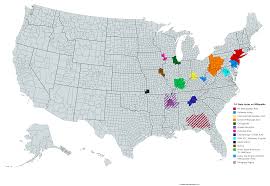The Importance of Urban Planning in Developing Livable Areas
Urban planning plays a crucial role in shaping the development of livable areas within cities and communities. By carefully designing and organizing the physical environment, urban planners can create spaces that are not only functional but also aesthetically pleasing and sustainable.
Creating Functional Spaces
One of the primary goals of urban planning is to create functional spaces that cater to the needs of residents and visitors. This includes designing efficient transportation systems, providing access to essential services such as healthcare and education, and ensuring a mix of residential, commercial, and recreational areas within close proximity.
Promoting Aesthetic Appeal
In addition to functionality, urban planners also focus on promoting aesthetic appeal in urban areas. By incorporating green spaces, pedestrian-friendly streetscapes, public art installations, and architectural diversity, planners can enhance the visual appeal of a city while creating a sense of place and identity for its residents.
Ensuring Sustainability
Sustainability is another key consideration in urban planning. By incorporating principles of sustainable design, such as energy-efficient buildings, green infrastructure, waste management systems, and public transportation options, planners can help reduce the environmental impact of urban development and create healthier living environments for residents.
Fostering Community Engagement
Effective urban planning also involves fostering community engagement and participation in the development process. By involving residents in decision-making processes through public consultations, workshops, and community forums, planners can ensure that the needs and preferences of local stakeholders are taken into account when shaping the future of their neighborhoods.
Conclusion
In conclusion, urban planning plays a vital role in developing livable areas that are functional, aesthetically pleasing, sustainable, and inclusive. By carefully considering factors such as functionality, aesthetics, sustainability, and community engagement, urban planners can create vibrant and resilient cities that enhance the quality of life for all who inhabit them.
Common Questions About Areas: Operations, Locations, and Terminology
- How many areas operate in North America?
- How many locations does Areas USA have?
- What is the same meaning of areas?
- What are the 7 common surface areas?
- What do you call different areas?
How many areas operate in North America?
The number of areas that operate in North America can vary depending on the context and definition of “areas.” In general, North America is home to a diverse range of geographical regions, urban areas, administrative districts, and economic zones. From major metropolitan areas like New York City and Los Angeles to rural agricultural areas in the Midwest, North America encompasses a vast array of distinctive locales that contribute to the continent’s cultural and economic landscape. Therefore, pinpointing an exact number of areas operating in North America may be challenging due to the multifaceted nature of the region’s geography and demographics.
How many locations does Areas USA have?
Areas USA operates in numerous locations across the United States, serving travelers and visitors with a variety of dining and retail options. With a widespread presence in key transportation hubs such as airports and travel plazas, Areas USA has established itself as a leading provider of innovative food and beverage concepts and retail services in diverse locations throughout the country.
What is the same meaning of areas?
Areas can be synonymous with terms such as regions, zones, districts, or territories. In a general sense, “areas” refers to specific geographical locations or spaces that may be defined by boundaries or characteristics. These terms are often used interchangeably depending on the context in which they are being discussed.
What are the 7 common surface areas?
The seven common surface areas refer to the basic geometric shapes that are commonly encountered in mathematics and everyday life. These include the surface areas of a cube, rectangular prism, sphere, cylinder, cone, pyramid, and triangular prism. Understanding and calculating the surface areas of these shapes is essential in various fields such as architecture, engineering, and design, as it helps determine the amount of material needed for construction or the capacity of a container. Mastering the concept of surface area allows for efficient problem-solving and spatial reasoning skills.
What do you call different areas?
Different areas within a city or community can be referred to by various names depending on their characteristics and functions. Common terms used to describe different areas include residential neighborhoods, commercial districts, industrial zones, recreational areas, cultural hubs, and green spaces. Each type of area serves a specific purpose and contributes to the overall fabric of a city, offering residents and visitors a diverse range of experiences and amenities. By understanding the distinctions between these different areas, urban planners and policymakers can effectively design and manage the built environment to create dynamic and well-balanced communities.





